Where Do Most People Live In Japan? And Why?
Even though Japan ranks 61st in terms of area, its ratio of population to size is among the top 10 of the world. So it is easy to see that Japan’s population heavily is distributed in some particular places. Where do most people live in Japan? And more importantly, why? This article will shed a light on that matter.
Japan Population Distribution
According to worldometer, Japan’s population in 2021 is 126,050,804. But only 8% of that live in rural areas, decreasing by 13% since 2000. The rest of the population (around 92%) concentrates in big cities on the Pacific shore of Honshu. There are 14 cities of which populations surpass 1 million and another 200 have at least 100,000 residents.

There are 14 cities in Japan of which populations surpass 1 million and another 200 have at least 100,000 residents.
This is partly because mountains and forest respectively make up 75% and 68% of Japan land. Among developed countries, these figures are only lower than those of Finland and Sweden. Furthermore, only there is only 5% of the Japanese labor force in the agriculture section. Some farmers even work part-time in close by town to earn additional income. Therefore, most Japanese commute to the plain rural areas, where they can find developing transportation, better social services and quality of life. Young people also are attracted by more education and jobs opportunities in cities.

If comparing Japan’s regional population in 2015, we can find that the most populated is Kanto, following by Keihanshin and Tokai. Together these three regions contribute two-thirds of Japan’s population. Regarding prefecture, the dark red color represents the most crowded city while the greenest area represents the opposite.
Where most people live in Japan?
1. Tokyo-Yokohama
According to Demographia World Urban Areas in 2019, Metropolitan Tokyo-Yokohama holds the title for Most Populated City not only in Japan but also in the world. At the moment, nearly 12 million people (10% of Japan’s population) live in the center of this area. If counting residents in the greater Tokyo metro area comprising of Kanagawa, Saitama, and Chiba, the population would be close to 38 million (30% of Japan’s population).
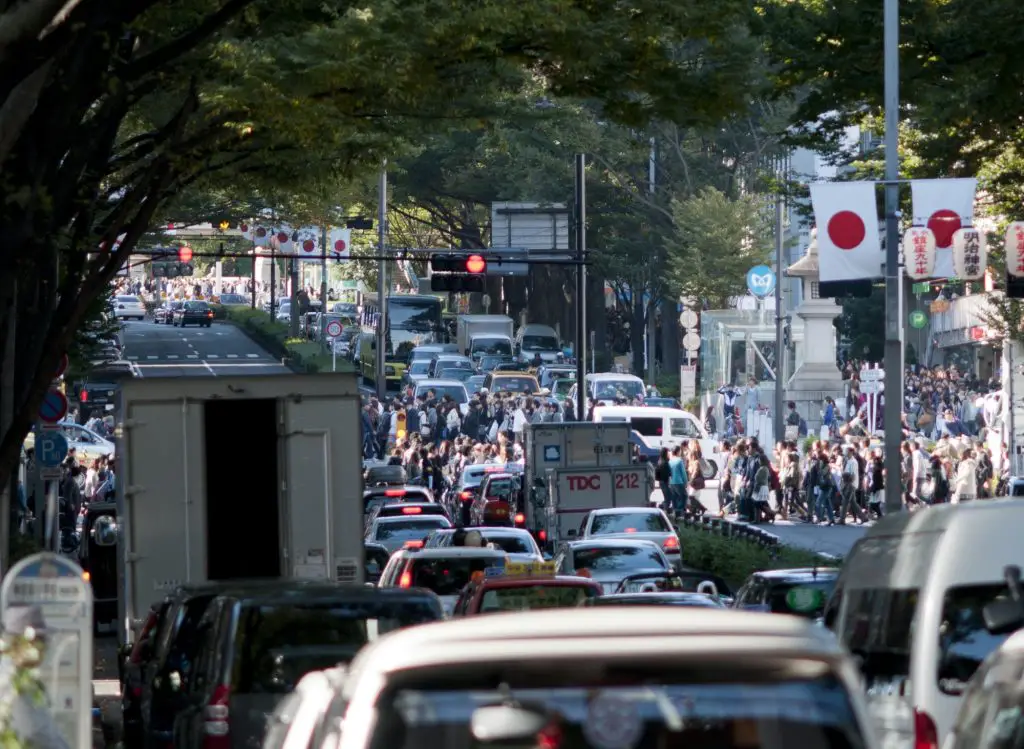
The great Tokyo area’s population would be close to 38 million.
As the Greater Tokyo Area covers an area of about 13,500 km2, simply do the math, we get the massive density rate of 6,200/km2 which means 6,200 people live on one square kilometer on average. This figure is 18 times higher than the average for all of Japan (340/km²). Just visit Shibuya Crossing, the busiest crossing on earth, or any of Tokyo train stations during rush hours, you will be overwhelmed by the sheer number of people. It is so crowded that you will find it hard not to bump into anyone.
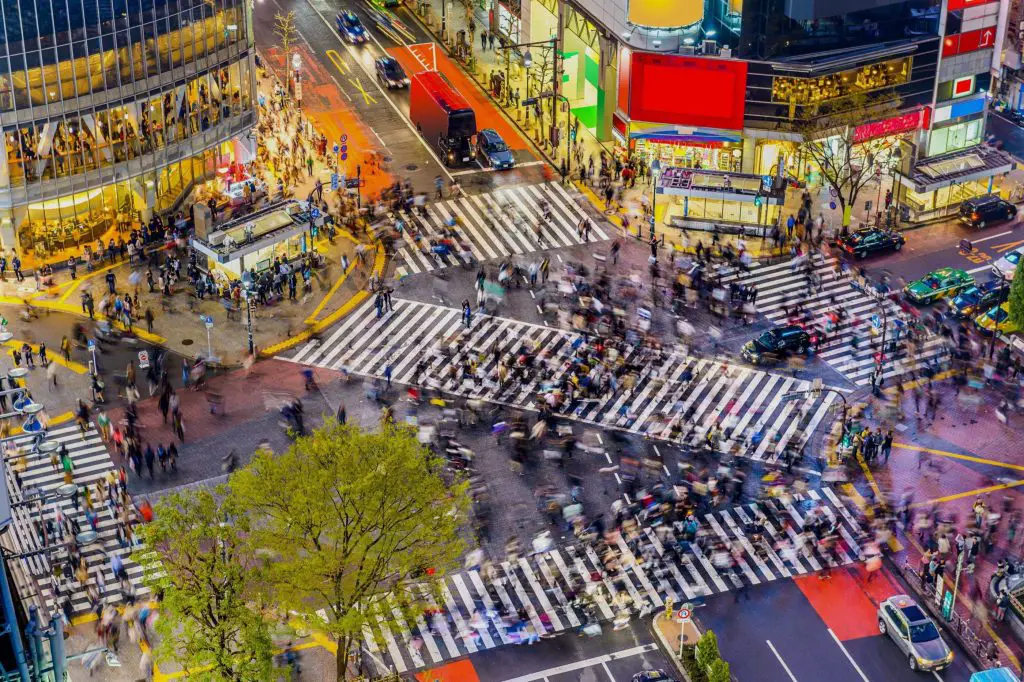
Shibuya Crossing is the busiest crossing on earth.
Among Tokyo’s 23 wards, the area with the highest population density is Toshima where the most famous downtown districts such Ikebukuro, Shinjuku, or Shibuya are situated.
| Most densely populated wards in Tokyo | Toshima | Nakano | Arakawa |
| Population density | 22,887.24/km² | 21,512.32/km² | 21,246.85/km² |
Reason:
Many, especially young people, claim their decision is due to Tokyo’s various entertainment facilities, events, and fashion streets. Better access to higher education and employment is also a crucial factor why people move to Tokyo where the majority of top universities and large companies lay their headquarters.
However, due to COVID-19 pandemic, teleworking to Tokyo has been reduced sharply which also lessens the growth of the Japanese capital’s population. While 64,176 immigrants moved to one of the 23 wards of Tokyo in 2019, the number fell to approximately 13,000 in 2020. At the same time, Tokyo recorded 26,032 individuals moving out of the neighboring suburbs.
2. Osaka
Osaka population in 2021 is 2,592,413 and there are typically 4,635.69 residents in a kilometer. In the recent report of the Ministry of Internal Affairs and Communications, contrary to Tokyo’s recent reverse trends, Osaka even exceeds its population growth rate. In the last 8 months of 2020, after the infection of coronavirus, Osaka still hosts 9,075 new inhabitants, over half the number in 2020, which is 16,802. This marks the 20 consecutive years of population increase in Osaka.
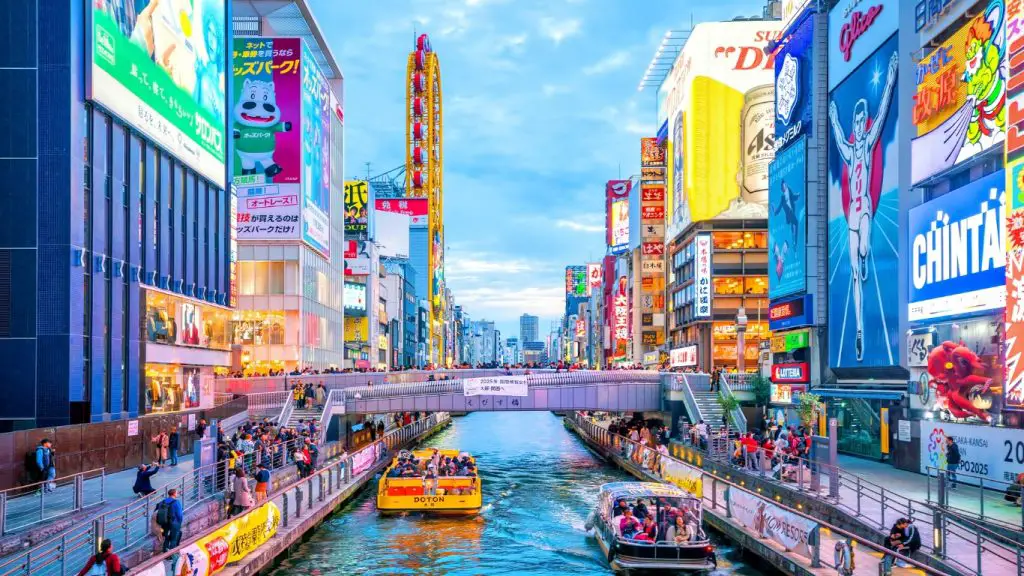
Osaka population in 2021 is 2,592,413 and there are typically 4,635.69 residents in a kilometer.
Reason:
The reason lies in Osaka’s critical location which makes it a gateway bridging Japan and not only other Asian nations but also the rest of the world. The Kansai International Airport holds extensive international flights to more than 89 cities in 25 different countries and regions around the clock. Osaka is also a railways and road transportation spot connecting the Kansai region to other parts of Japan. Besides, Osaka offers the movement of redevelopment with artificial island Yumeshima in Osaka Bay, integrated resorts including casinos, and other large-scale projects/ offices building.
This partly explains the steady expansion in the number of foreign visitors to Osaka. To meet the demands of ex-pat population, service industries ranging from hotels, restaurants to retail stores also recruit more employees. As a result, there are a decent number of 20 to 29-year-old people moving to Osaka seek jobs in these fields.
3. Nagoya
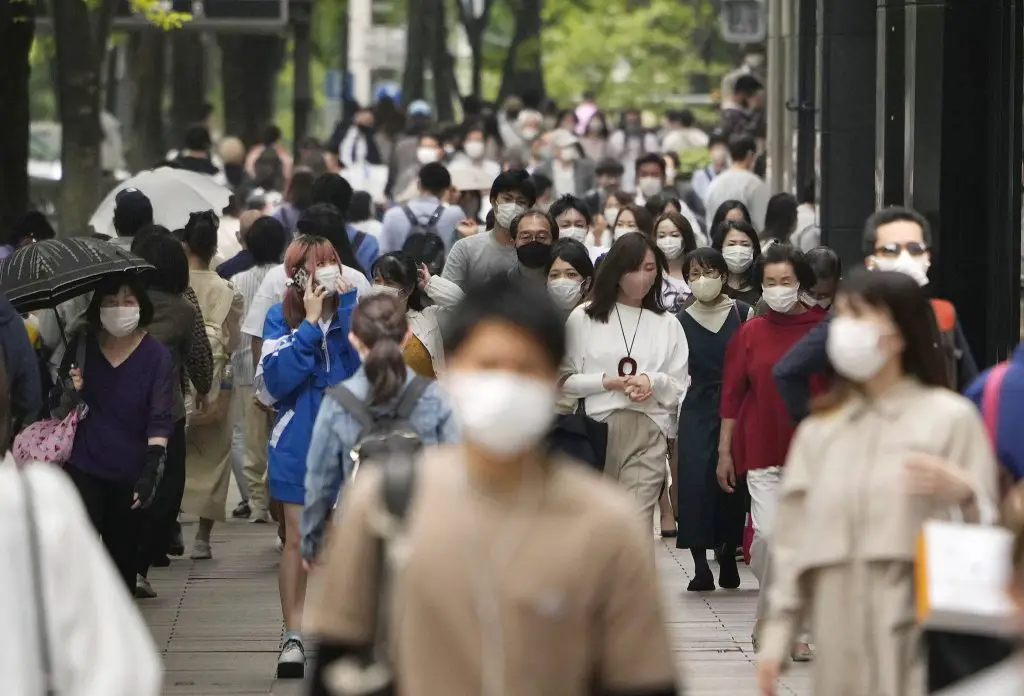
With a population of approximately 2,191,279, Nagoya is the fourth-largest city (behind Tokyo, Yokohama, and Osaka)
Located in the central of Japan, Nagoya is the largest city in the Chūbu region. It is also located on the Tokaido Shinkansen (i.e. bullet train) line along the Pacific Coast, between Tokyo and Osaka. With a population of approximately 2,191,279, Nagoya is the fourth-largest city (behind Tokyo, Yokohama, and Osaka) and ranks 3 among the most populous urban area.
Reason:
Firstly, the base of Nagoya population is its role as a large incorporated city and manufacturing center. Some of Japan’s largest corporations such as Toyota, NGK, Mitsubishi all have branches or factories here. Secondly, Nagoya’s transport network is extremely developed, well-organized, and not crowded as in Tokyo. You don’t need a car here as there is a station in every area. Last but not least, Nagoya attracts a lot of visitors because of its famous historical destinations such as Nagoya Castle, the Tokugawa Castle, and Atsuta Shrine.
FAQs
Is Japan a nice place to live?
The answer varies among different people and their criteria for “a nice place to live”. Objectively, living Japan has its competitive advantages. Foreigners usually praise life in Japan for the following reasons:
- Safety: low crime rate, little phone scams, pickpockets, and burglaries cases
- Cleaniness: clean street or public places
- Amazing food: ramen, sushi, street foods, or the sake
- Convenience: diverse, accessible, and developed transportation; as well as a lot of 24h convenience stores
- Culture: a lot of cultural destinations to travel to and festivals to join all year round
On the other hand, there may be complaints that there are too many rules in Japan. For example, you have to take off your shoes before going inside, you have to sort your rubbish, you have to wear a dark uniform and bow to greet people at work, so on. The work culture in Japan itself is quite controversial, refer to this article for more details.
Is living in Japan hard?
It can be since the cost of living in Japan is quite expensive, especially compared to other Asian countries. The pressure can double in crowded big cities like Tokyo where the competition for accommodation or jobs is intense. Many foreigners also find Japanese difficult to learn and in many places in Japan, people don’t prefer speaking English.
So, if you are a foreign student living on budget and can barely find a part-time job, the financial burden can make life tough. Besides, being far away from home, with no friends can add up to the problem. But in fact, most people get over the first difficult period quickly and get used to life in Japan.
What is it like to live in Tokyo?
It must be an awesome and unique experience. Tokyo is a massive metro area that is full of surprises, so it takes forever to discover all of Tokyo’s wonders. Just a few of the endless entertainment choices in Tokyo include karaoke boxes, restaurants,s and bars, themed café, amusement parks, Akihabara anime, manga, and shopping, of course. Tokyo is also a foreign-friendly city as the number of international citizens is high and even signs generally use English.
But the center of Tokyo is extremely crowded and noisy. The pace of life here is super fast as people always hustle whether at work or go out to have fun. At the same time, the rental price here can be much more costly than in other parts of Japan.
Why do so many people live in Tokyo and not in other cities of Japan?
The main reason is related to education and employment opportunities in Tokyo, for both locals and ex-pats. As all large companies are in Tokyo, if you are competent, you can’t miss the chance to get a high-paid job in this city. Moreover, Tokyo fame makes it kind of where people come to achieve their “Japanese dream”. If you can succeed in Tokyo, you can succeed anywhere.
Does the population in rural areas of Japan decline?
Yes. Because youngsters move to urban areas in search of work, the population in the countryside tolerates serious loss. In some places such as Aomori or Yamagata, it is predicted that by 2040, there will be no 20-to-39 women left in 80% of the towns.
Does the overpopulation in urban areas have a bad effect?
Yes. Overpopulation hurts the quality of life in cities. For instance, Tokyo railway systems, despite their huge scale, can’t meet the population demand. Normally, catching a train during rush hour in Tokyo is completely a nightmare as the boarding rate can reach 200% which means the train is stacked. Moreover, the housing cost rises and there are not enough daycare and nursery services for children. As buildings are constructed too close, fires can spread quickly.

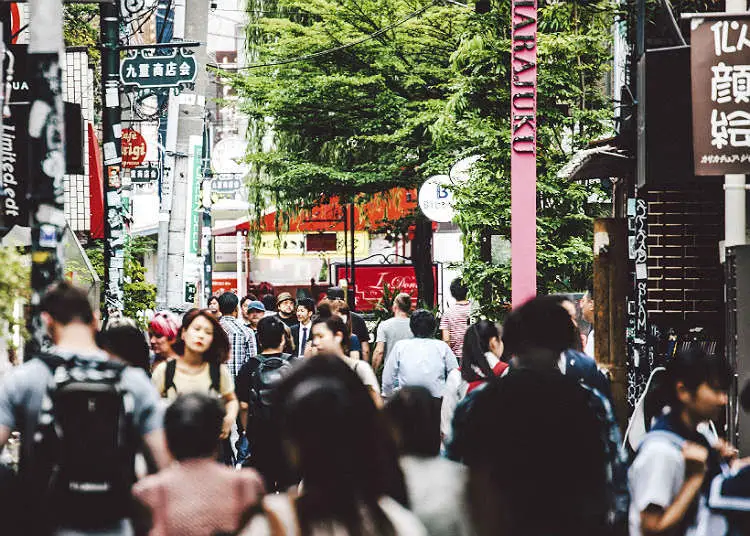
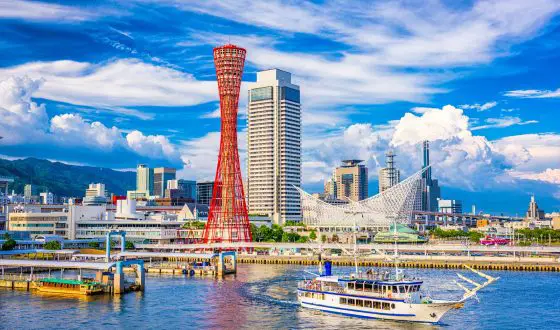
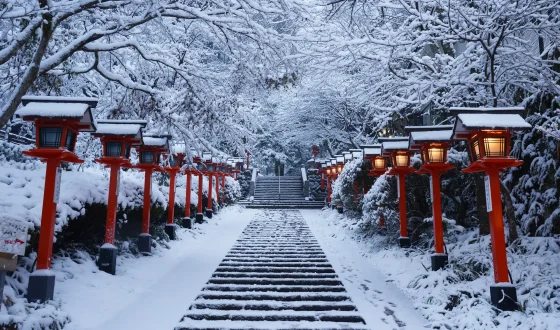






thanks